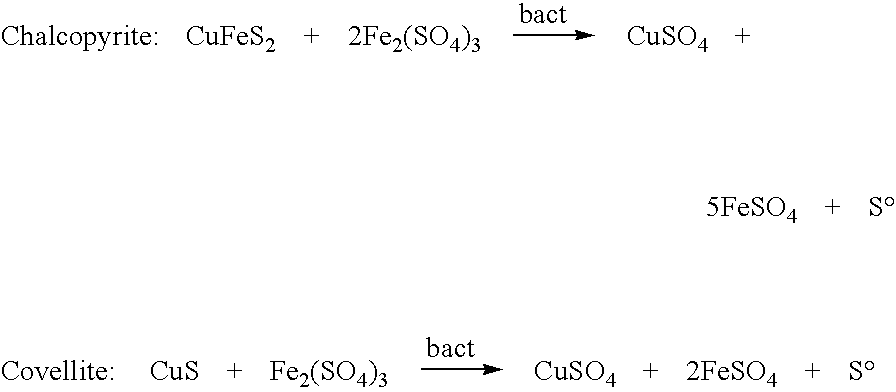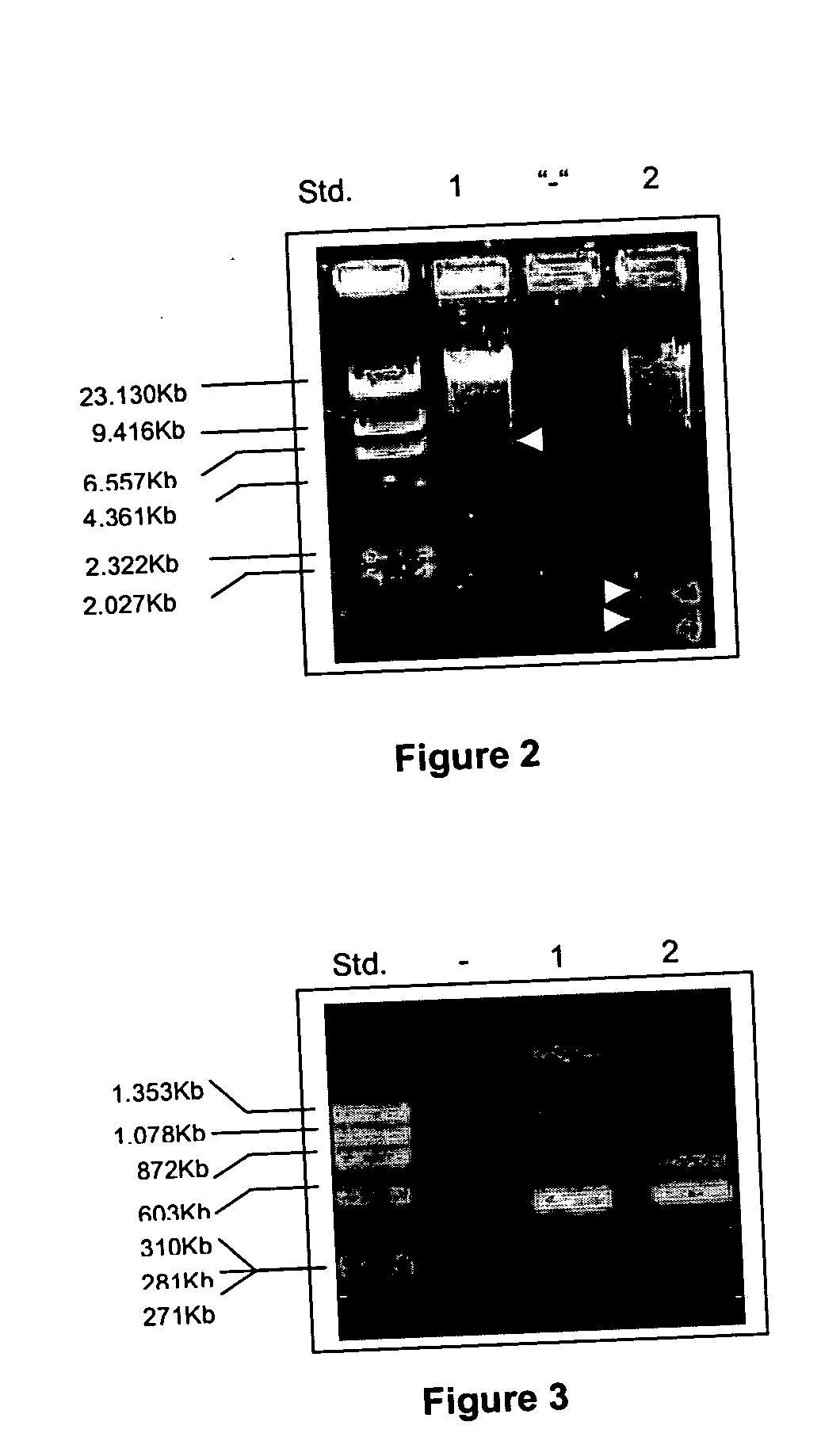Bacteria strain wenelen DSM 16786, use of said bacteria for leaching of ores or concentrates containing metallic sulfide mineral species and leaching processes based on the use of said bacteria or mixtures that contain said bacteria
a technology of chalcopyrite and leaching process, which is applied in the field of bacteria strains, can solve the problems of insignificant industrial labor for copper fractions recovered from chalcopyrite, limited application of this technology to oxidized minerals, and inability to achieve commercially feasible conditions in leaching tanks for concentrate leaching
- Summary
- Abstract
- Description
- Claims
- Application Information
AI Technical Summary
Problems solved by technology
Method used
Image
Examples
application examples
Example 1
[0050] The specific activity of isolated strain Wenelen DSM 16786 was measured in bioleaching of a copper mineral concentrate comprising chalcopyrite (84.69% by weight), which was obtained from a mine site at industrial level, according to the following experimental protocol: [0051] 1. Pre-cultured bacteria Acidithiobacillus ferrooxidans Wenelen DSM 16786 at a concentration of 107 cells / ml were inoculated in a 500 ml flask with 150 ml of modified 9K medium at pH 2.5. [0052] 2. Up to 1% of a copper concentrate containing 84,69% (by weight) of chalcopyrite, with chemical composition indicated in Table 1 and mineralogical composition indicated in Table 2, was added to the inoculated medium. Only chemical compositions of the minerals are indicated in Table 1, since the remaining 35.45% correspond to gangue and trace elements. [0053] 3. The flask containing the aforementioned mix was incubated in an orbital shaker at 30° C. and 150 rpm during 41 days. [0054] 4. Copper contents ...
example 2
[0058] Oxidizing activity on copper concentrate was measured in order to establish the influence of temperature and pH on the growth of isolated strain Wenelen DSM 16786, according to the following protocol: [0059] 1. Strain Wenelen DSM 16786 was cultured during 7 days in modified 9K medium. [0060] 2. Cells were filtrated through Toyo No. 5B filter paper in order to remove iron precipitates. [0061] 3. The filtrated cells were centrifuged at 15.000×g during 10 min and washed with a buffer solution of μ-alanine-SO42− 0.1 M. An amount of cells corresponding to 0.1 g of total protein (Lowry et al., J Biol Chem. November 1951; 193(1): 265-75) was resuspended in 1.0 ml of the same μ-alanine-SO42− 0.1 M buffer. [0062] 4. A suspension of 50 mg of the copper concentrate described in Tables 1 and 2 was prepared in 1.0 ml of μ-alanine-SO42− buffer at the required pH and temperature. [0063] 5. The reaction was started by adding the cells obtained in step 3 to the copper concentrate suspension, ...
example 3
[0068] An experiment was carried out in order to compare bioleaching activity of isolated strain Wenelen DSM 16786 on a copper sulfide ore sample in a bioleaching mini-column having a non flooded ore bed simulating industrial conditions for mineral processing in heap or dump leaching, when compared to other collection strain of the same species (strain ATCC 23270), according to the following protocol: [0069] 1. Columns were made using polyvinyl chloride tubes having 40 mm diameter and 20 cm height. [0070] 2. The columns were packed with 225 g of mineral comprising mainly chalcopyrite and bornite and having the characteristics described in Table 3. [0071] 3. The inoculated cells were previously washed with irrigation buffer (3.0 g / L (NH4)2SO4, 0.5 g / L K2HPO4, 0.5 g / L MgSO4.7H2O, 0.1 g / L KCl and 0.1 g / l Ca(NO3)2, 6 g / L FeSO4.7H2O, pH 2.5) and resuspended in 0.5 ml buffer. The amount of inoculated cells was 2×109 total cells for each column. [0072] 4. One of the columns was not inocula...
PUM
 Login to View More
Login to View More Abstract
Description
Claims
Application Information
 Login to View More
Login to View More - R&D
- Intellectual Property
- Life Sciences
- Materials
- Tech Scout
- Unparalleled Data Quality
- Higher Quality Content
- 60% Fewer Hallucinations
Browse by: Latest US Patents, China's latest patents, Technical Efficacy Thesaurus, Application Domain, Technology Topic, Popular Technical Reports.
© 2025 PatSnap. All rights reserved.Legal|Privacy policy|Modern Slavery Act Transparency Statement|Sitemap|About US| Contact US: help@patsnap.com



